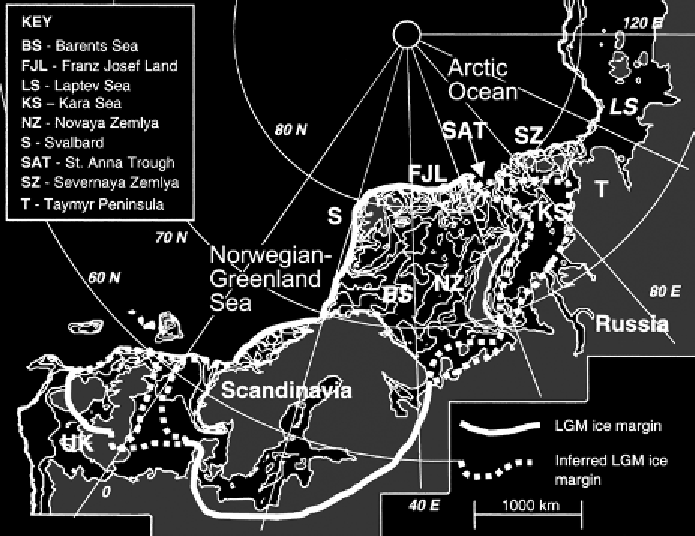Geoscience Reference
In-Depth Information
Figure 10.6.
Ice extent in northwestern Eurasia during the LGM (adapted by Siegert
et al.,
2001
from Svendsen et al.,
1999
, by permission of John Wiley and Sons).
Verkhoyansk, Chersky, and Koryak highlands of northeastern Siberia (Velichko and
Spasskaya,
2002
; Shahgedanova,
2002
).
10.5.2
Arctic Ocean
In general, the Arctic Ocean climate during the LGM featured cold winters, whereas
summers were mostly dry and cooler than present. Ice conditions in the Arctic
Ocean during the LGM are still poorly known and controversial. One hypothesis is
that there were large floating ice shelves, up to 2-3 km thick, over the trans-oceanic
ridges. This is evidenced by deep ice scouring on the ridge crests, as discussed later.
A contrary hypothesis is that there was thick perennial sea ice, such as occurs off
northern Canada at present (Clark,
1982
). That sea ice was at least more extensive
than at present is well documented. For example, A. de Vernal and C. Hillaire-
Marcel (
2000
) provide evidence of extensive perennial sea ice along the continental
margins of eastern Canada.
The idea of an Arctic Ocean ice sheet and large floating ice shelves was first
advanced by J. Mercer (
1970
) and has been restated by Grosswald and Hughes
(
1999
). One piece of supporting evidence is the widespread occurrence of abiotic
conditions in the ocean sediments during the LGM. Glacial moulding and scouring
of landforms and the fluting or erosion of ridge crests has been identified at 1 km

